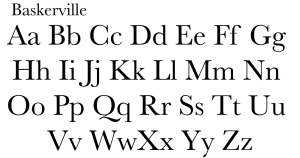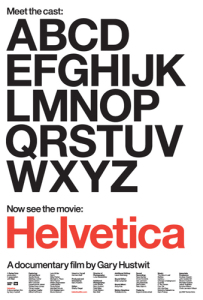After studying the five typefaces (Garamond, Baskerville, Bodoni, Century, Helvetica Neue), I began to understand the differences between them all. My two favorites are Baskerville and Helvetica Neue. Baskerville is crisp and elegent the way that the thicks and thins add character to each letter. The letters all flow well with each other especially with the lower case letters having cury serifs. Helvetica Neue is also nice because I see it as the most “universal” font of the five. It can be used universally for just about any occation and the sharpness of the lines are visually strong and make the type very legible.
If I had to choose a font that I liked the least it would most likely be Bodoni because the blocky and cut off serifs to me are kind of awkward when reading. Yes serifs are supposed to make a text easier to read and flow from letter to letter, but I find the flat serifs distracting and unappealing. It honestly just looks unfinished compared to a typeface like Baskerville.

